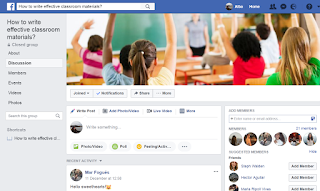Aulas Felices - 3 activities for strategic investment & to lower anxiety in classroom

This post offers some proposals extracted from the book Aulas Felices. I thought these would be ideal to enhance students’ motivation in class while at the same time they will be learning since they will be so interested and focused in the activities that they will be unconsciously acquiring new knowledge. 1. Creativity: originality and ingenuity I viewed this as a great proposal offered by the book Aulas Felices , since it is a workshop that is suitable for all ages though we will focus primarily on secondary students. The objectives of this workshop are to promote the creative capacities of students and to promote the interdisciplinary and collaborative work between the teachers. How would we carry out such workshop? The aim of this activity is to establish a time in which students will be able to delve into their creative development, dealing with it from the largest number of possible areas. It is important to mention that this activities will not only be rela
